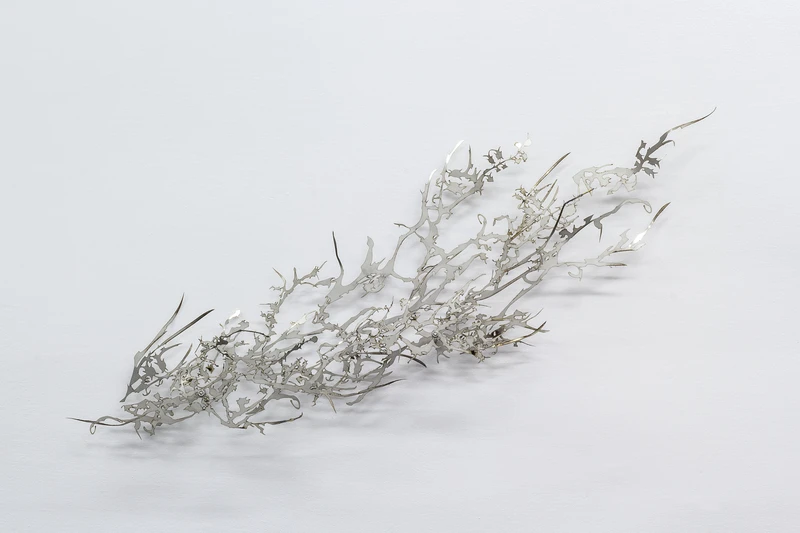Æon
16 May-3 Jul 2025
PV 15 May 2025


We live on a placid island of ignorance in the midst of black seas of infinity, and it was not meant that we should voyage far. With this sentence, H.P. Lovecraft opens The Call of Cthulhu—arguably his most iconic and mythologized short story. The rhetorical move here sets the stage for a worldview in which what is human is but a marginal sliver of a far greater whole.
To construct this perspective, Lovecraft draws on the concept of the aeon—a geochronological unit encompassing eras that span hundreds of millions of years. Yet in his writing, the term transcends the spatiotemporal: it carries an existential charge. Aeons—those endless eternities—become something primordial, pre-human, and utterly incomprehensible. They operate on a scale that crushes our capacity for understanding and are wielded as instruments of cosmic horror—a horror that arises from revealing humanity’s insignificance in the face of vast, eternal forces. Lovecraft speaks of the aeon as a gulf of unimaginable archaic history, of ancient and godless cycles of life in which the world and our conceptions have no part. Elsewhere, he adds that within these temporal abysses, the human world seems but a transient and ephemeral episode.
But these aeonic depths do not refer solely to the past—they may just as well belong to the future. What defines them is a continuity of being, in which the human is neither center nor measure, but something nearly accidental.
This mode of thought is echoed in the work of Justyna and Paweł Baśnik, as well as the artistic duo Inside Job (Ula Lucińska and Michał Knychaus). In their practices, human scale is contrasted with alternate temporalities—deep durations belonging to other life forms co-inhabiting the Earth. The images and objects they create seem to emerge from aeonic abysses, from suspended time zones we can neither map nor name. While the Baśniks’ works evoke a world before humans, Inside Job conjures visions of what might follow humanity’s end. Despite distinct aesthetic languages, their works form a continuum—one that feels grown from a single evolutionary process.
The paintings and objects by Justyna and Paweł Baśnik draw from the visual language of ancient imagery, but they carry meanings that extend beyond the human realm. Many of Justyna’s works center around plants—both contemporary species and their archetypal ancestors. In Larix decidua (from the Solastalgia series), she portrays the European larch, a tree native to temperate zones and now threatened with extinction due to global warming. The series title references a term for the homesickness caused by environmental loss—the longing for a natural world eroded by human impact.
In her latest work, the artist reinterprets the medieval altarpiece. In place of the Tree of Knowledge, we find the titular Tree of Life—a motif rooted in pre-Christian mythologies, including those of Mesopotamia. It symbolizes the constant regeneration of nature and the transience of human life. In another variant, it becomes the Cosmic Tree—bridging the underworld, Earth, and the cosmos. The aeonic dimension is also present in Tabernaculum, where, in place of the eucharist, the central relic is a prehistoric fossil: the shell of a cephalopod from one hundred million years ago.
Inside Job’s Will Spread series of metal assemblages likewise engages with the longevity and adaptive capacities of plants. At its center is the silhouette of a thistle—a ruderal plant often found in human-disturbed areas—reworked through forms inspired by the Voynich manuscript. This mysterious document, filled with as-yet-unidentified flora, entwines botanical illustration with alchemy and astrology.
Their Antiya series introduces futuristic visions of hybrid entities growing amidst the ruins of civilization. Floral sculptures made from recycled leather and synthetic textiles sprawl across metal frameworks, resembling aquatic lilies. Though they rest upon industrial remnants, they assert dominance over them. Yet these forms are not purely botanical—they fuse biological and technological orders. Ula and Michał continually subject their forms to mutation, transforming earlier objects into new ones, crafting a fluid narrative in which nothing remains fixed. Their material choices also underscore this hybridity—as in Untitled (Resting Spores), where textile screens made from linen and cotton (plant-based in origin) are machine-woven and then hand-finished. The result: composite systems where natural, technological, and human cycles intersect.
The aeonic emerges, too, in Paweł Baśnik’s painting. Earth resembles a geological record of transformation. The earthy pigment palette evokes timeless processes—rock stratification, erosion, tectonic pressure. The non-figurative composition unfolds through gravity-driven flows of paint and solvents. Pigments settle, accumulate, and give rise to organic formations—governed entirely by forces beyond human control.
An image emerges from a similar process In His House at R’lyeh Dead Cthulhu Waits Dreaming—a direct reference to Lovecraft’s mythos. The canvas features an anthropomorphic statue caught mid-transformation. Blurred contours and fluid stains give it a dynamic, almost pulsating quality—as if the form were in slow motion, in a state of perpetual mutation. The shapes are irregular, organic, as if emerging from matter itself, forming an alien, unknowable geometry. It is the call of something that, as the artist notes, should neither be heard nor granted visible form.
The practices of Justyna and Paweł Baśnik and Inside Job embody a way of thinking that displaces humanity from the center of the world. Time here does not run linearly, nor does it move toward any fulfillment—it stratifies, swells, mutates. Like pigment on canvas or hybrid forms rising from raw matter. Aeonic duration becomes a mode of seeing—a gaze in which humankind does not vanish, but becomes part of larger processes.
These works do not offer easy answers, set boundaries, or provide consolation. They are like traces of something that once was—or of what we have not yet learned to recognize—survivals or omens. In this suspension of form, meaning, and temporality, a new language for narrating the world may be taking root.
Text: Joanna Kobyłt